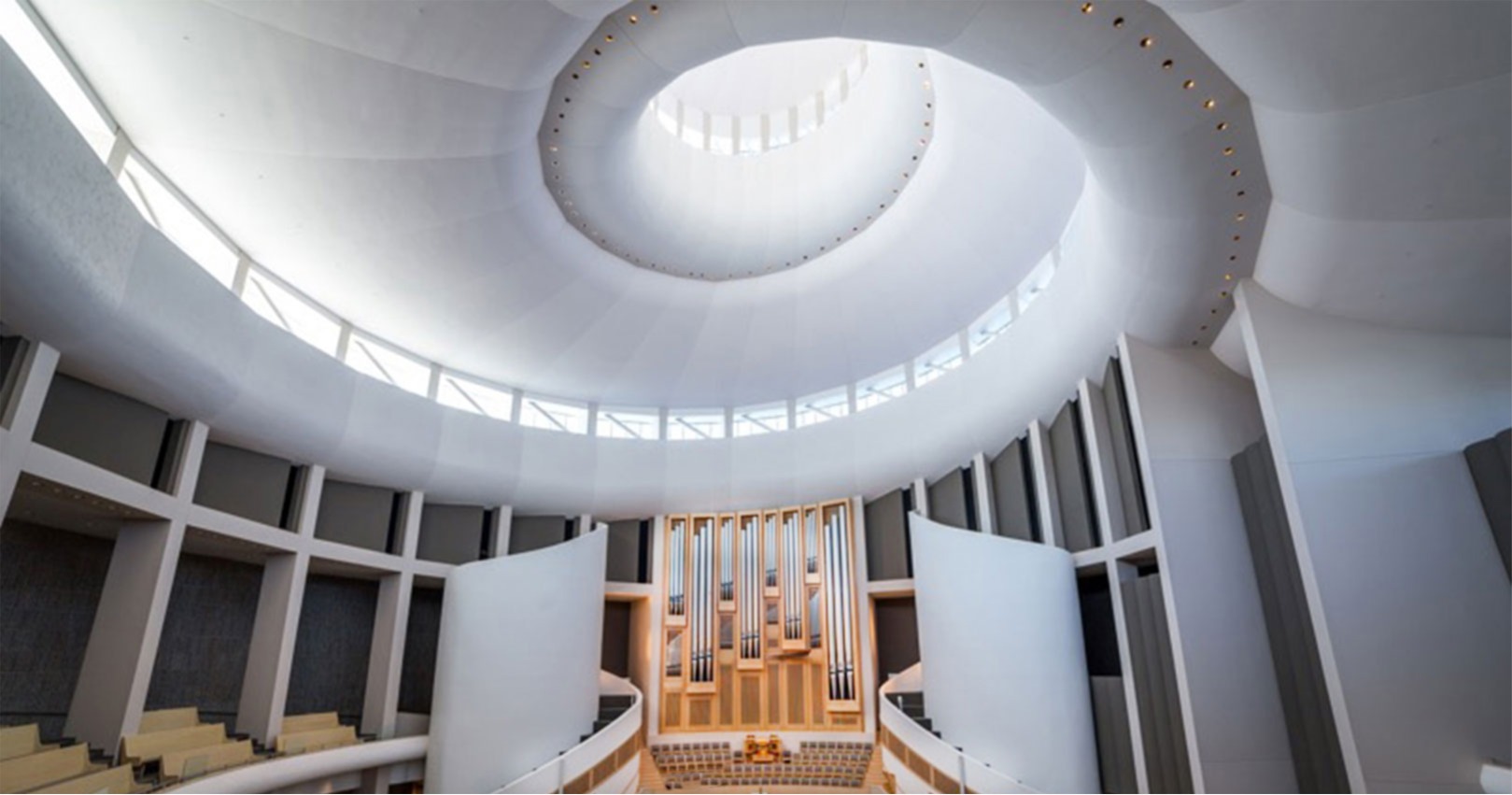

Independence, MO

The Temple shall be dedicated to the purpose of peace. It shall be for reconciliation and for healing of the spirit.
The Temple of the Community of Christ in Independence, Missouri, is truly remarkable in virtually every aspect. The principal architect for the project was Gyo Obata of the internationally acclaimed firm of Hellmuth, Obata, and Kassabaum of St. Louis, Missouri.
The 300-foot tall, spiral-shaped structure houses the sanctuary seating 1000 on the main floor and 600 in a balcony that circles around almost three quarter of the space. Entering the room, one’s eye is drawn to the spiral ceiling that ascends 195 feet from the main floor. Over one million cubic feet of volume inside the room provided an incredible space for the performance of music.
The acoustics of the room are very favorable for music, especially the organ. The reverberation time is long and the “tail” of sound fades away slowly and evenly. Perhaps even more remarkable is the fact that the sound of a single note, even one quite soft, has incredible presence. So, while the full ensemble fills the space dramatically, individual voices sing with a clarity and presence not customarily associated with such vast spaces.
Designing an organ for a building that does not yet exist is especially challenging and becomes more so when the size and shape of the room are as unusual as the architecturally distinctive Temple. From the very beginning, it was obvious that a truly unique approach to the organ’s design and action would be required. The exceptional space demanded an exceptional organ simply to fill the huge volume.
Therefore, from the tonal standpoint, this vast space was a perfect opportunity to design a Résonance division of heroic proportions in order to provide sufficient power when playing with an orchestra or accompanying a large congregation. This division, which expands select pedal stops to manual compass in order to allow them to be played in either location, includes a Grand Plein Jeu based upon the Montre 32’.
We were especially fortunate to work very closely on the project with Dr. John Obetz, Principal Organist at the Community of Christ. The Résonance concept was especially intriguing to him. He wrote:
“After considering several outstanding builders, we chose Casavant Frères, largely because of their tonal orientation, history of quality instruments, and the unique approach they suggested to solve the problem of building a large tracker organ that also possessed good, sensitive key action. Part of that solution included the employment of a Résonance division.”
The divisions of this mechanical-action organ are distributed in a classic manner with the Positif Expressif just above the console. The Grand Orgue is in the center just above the Positif, and the Récit above the Grand Orgue at the top of the case. The Pédale-Résonance is divided to the left and right of the three manual divisions. The organ’s nomenclature is predominantly French for consistency and in recognition of the instrument’s basic tonal orientation.
The organ’s woodwork is made of maple finished to give it a very light color without obscuring the natural grain of the wood. The organ case contains pipes of the Montre 32’ and rises 50 feet from the console level.
The Temple organ immediately became a sought-after attraction for organists and music aficionados. The reaction of those who have played it over the years has been overwhelmingly positive. This is most rewarding to us. In an article featured in the Kansas City Star in 1993, John Obetz stated, “Of the people who have been in to play and hear it, these seems to be unanimity that this is one of the most spectacular organ sounds they have heard anywhere.”